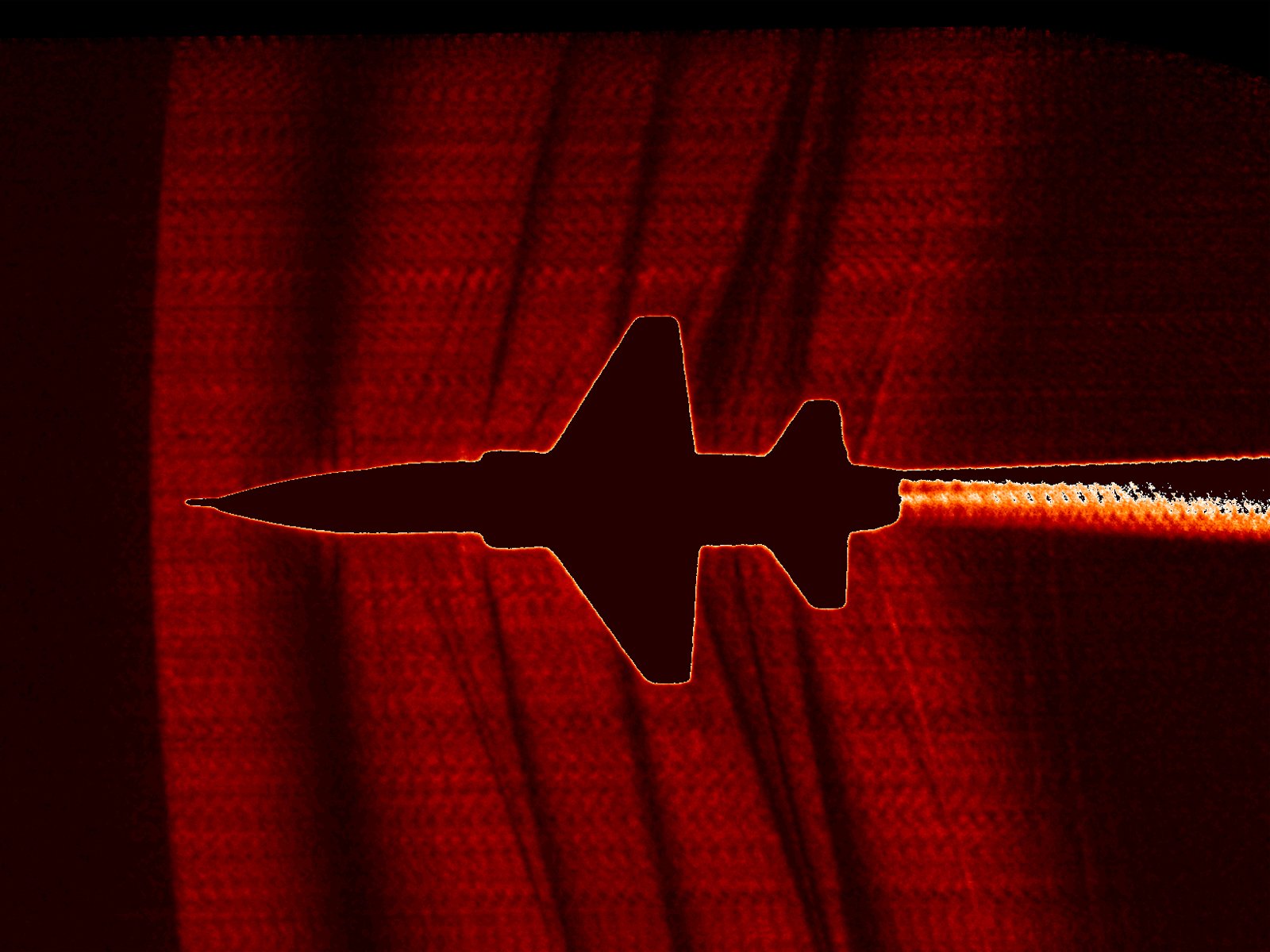A group of scientists at NASA‘s Ames Research Center in Mountain View, Calif. has successfully captured the first images showing interactions of supersonic jet shockwaves. The technique used to record them has been in development for over 10 years. NASA says this breakthrough will greatly contribute to its Aeronautics Research Mission Directorate.
“I am ecstatic about how these images turned out,” NASA Physical Scientist J.T. Heineck said in a press release. “With this upgraded system, we have, by an order of magnitude, improved both the speed and quality of our imagery from previous research.”
NASA’s team took images of air-to-air supersonic jet shockwaves as they merged during the fourth phase of Air-to-Air Background Oriented Schlieren flights, also known as AirBOS, at Armstrong Flight Research Center in Edwards, Calif. The scientists tested a new imaging system which can capture accurate images of shockwaves, which are sudden changes in pressure which occur when an aircraft breaks the sound barrier. Shockwaves produced by an aircraft flying faster than the speed of sound merge together as they move through the air. Often these shockwaves result in a sonic boom, which can sound like an explosion to those unaccustomed to hearing them.
“We’re looking at a supersonic flow, which is why we’re getting these shockwaves,” said AerospaceComputing engineer Neal Smith, who works at Ames’ fluid mechanics laboratory. “What’s interesting is, if you look at the rear T-38, you see these shocks kind of interact in a curve. This is because the trailing T-38 is flying in the wake of the leading aircraft, so the shocks are going to be shaped differently. This data is really going to help us advance our understanding of how these shocks interact.”
One of the team’s main goals was to test their new, advanced equipment in the air to capture high-quality air-to-air images. NASA had already used schlieren photography to study merging shockwaves produced by aircraft. However, the AirBOS 4 flights used an updated version of the schlieren systems, which captured triple the amount of data they were able to capture previously.
“We’re seeing a level of physical detail here that I don’t think anybody has ever seen before,” Armstrong senior research engineer Dan Banks said. “Just looking at the data for the first time, I think things worked out better than we’d imagined. This is a very big step.”
NASA used a B-200 King Air accompanied by an advanced camera system which increased the quality of the images showing the interactions of the supersonic jet shockwaves. The camera was also upgraded to allow the system to capture wide-field views. The new system also received a memory boost, which allowed for a faster frame rate of up to 1400 frames per second. That enabled scientists to obtain a large number of samples to study.
The images showing the interaction of the supersonic jet shockwaves were of such great quality because the space agency used a King Air aircraft which had been upgraded so it could be in exactly the right place at exactly the right time to take outstanding images.
“With previous iterations of AirBOS, it took up to a week or more to integrate the camera system onto the aircraft and get it working. This time we were able to get it in and functioning within a day,” flight operations engineer Tiffany Titus said. “That’s time the research team can use to go out and fly, and get that data.”





